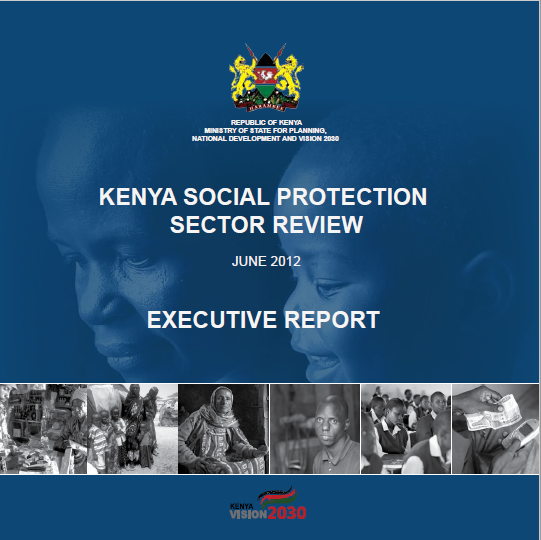Year: June 2012
Author: Government of Kenya. Ministry of State for Planning, National Development, and Vision 2030
Organization: Ministry of State for Planning, National Development, and Vision 2030
No. of pages: 36
Executive Summary
The first sector review produced in 2012 highlights the context of social protection in Kenya between 2005- 2010. There is now broad consensus among policymakers that social protection is a powerful way to fight poverty and promote inclusive growth. There is growing interest across Africa in safety nets as a means of providing predictable social assistance to poor and vulnerable populations. Evaluations of these programmes, including in Kenya, have shown that social protection directly reduces chronic poverty and vulnerability. In 2005/06 the rate of poverty was 47 percent, although poverty rates were markedly higher in rural areas (50 percent) than in urban areas (34 percent). Poor households were 78 percent more likely to report experiencing a negative effective of a shock than their wealthier counterparts. Despite these investments and a broad range of initiatives to promote poverty reduction and economic growth, poverty and vulnerability remain high in Kenya. The review highlights the current social protection landscape in Kenya. Between 2005 and 2010, social protection expenditure in Kenya rose from Ksh 33.4 billion to 57.1 billion, which was equivalent to 2.28 percent of gross domestic product (GDP) in 2010. The government is the largest source of financing to social protection in Kenya (55 percent), followed by development partners (22 percent) and members of contributory schemes (22 percent).
